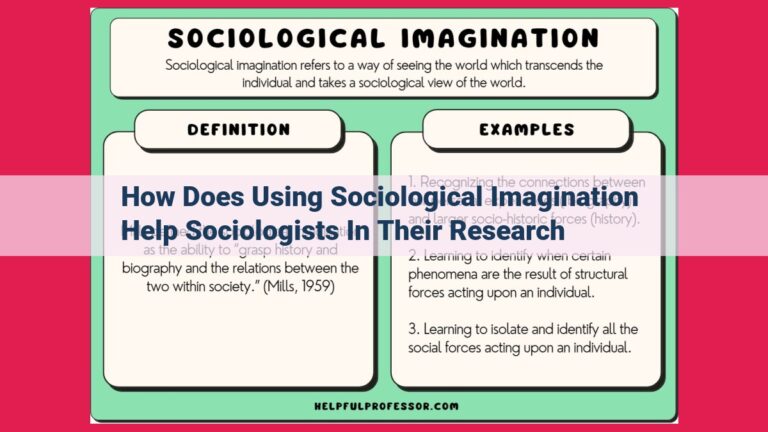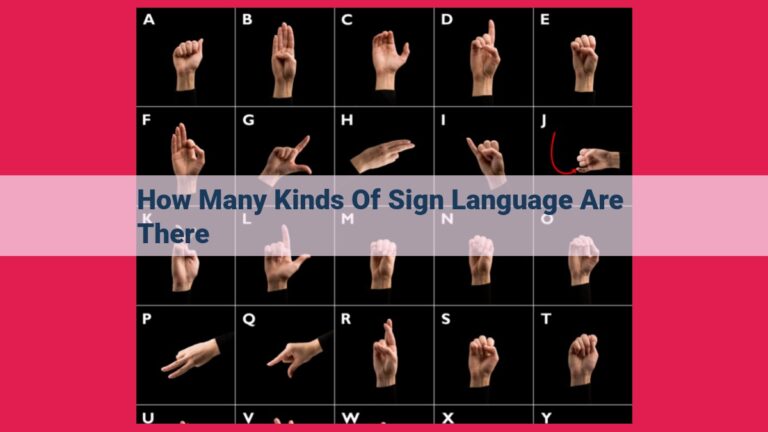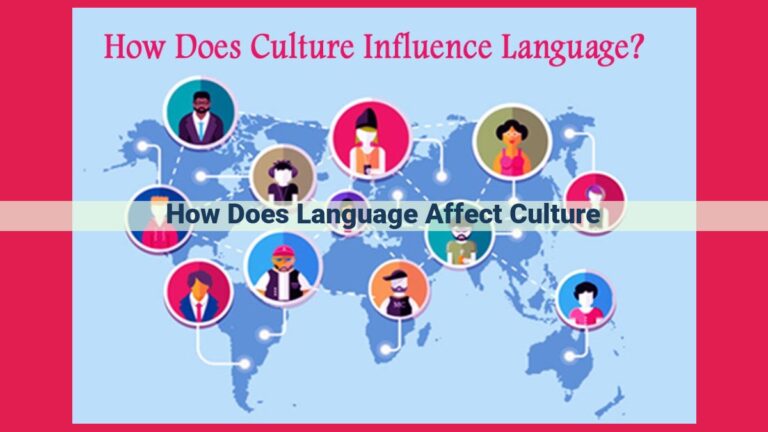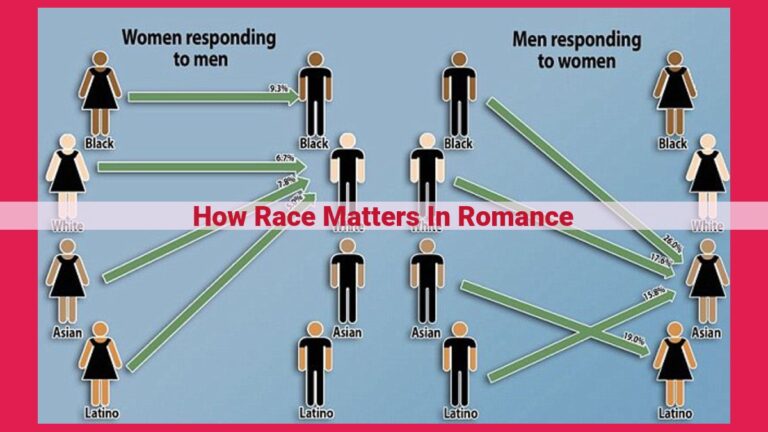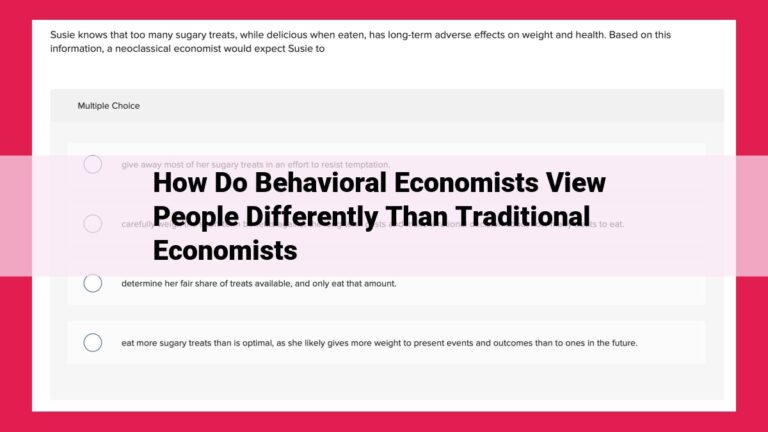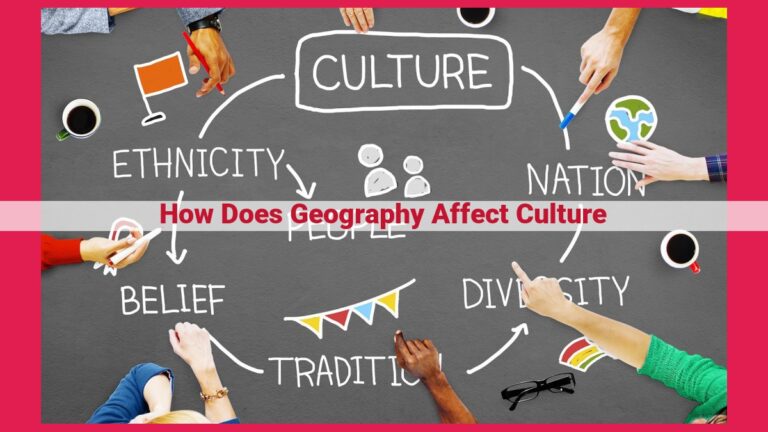Understanding The Factors Influencing Language Diversity And Variability
Despite sharing a common core, languages exhibit diversity due to factors such as geographic separation (isogloss), socioeconomics, and region (dialects, sprachbund). Social variations include sociolects for specific groups and registers for different contexts. Historical change brings language evolution, sprachbund, and etymological shifts. Technological advancements, mass media, education, and globalization influence language standardization and diversity. Foreign influence leads to code-switching, code-mixing, pidgin languages, and loanwords. These factors contribute to the dynamic and multifaceted nature of language, resulting in variations within the same linguistic framework.
Isogloss and Geographic Variation: Unraveling the Tapestries of Language
Across the vast tapestry of the world’s languages, geographical variation weaves a vibrant pattern, creating a kaleidoscope of linguistic diversity. Isogloss, an invisible line, marks the boundaries where distinct linguistic features coexist.
Within a single language, subtle variations in pronunciation, grammar, and vocabulary emerge like whispers carried by the winds. These variations can be as nuanced as the rustling of leaves or as pronounced as the thunderous crash of waves.
Imagine a vast linguistic landscape, where mountains of consonants and valleys of vowels collide. An isogloss may trace the crest of a mountain range, where one dialect’s sharp sibilants give way to another’s softer tones. In the lowlands, a river of vocabulary may flow, its currents carrying different words for the same object or concept.
Socioeconomic variables also shape the linguistic tapestry. Education, income, and occupation can influence the way people use language, creating socioeconomic dialects. These dialects may differ in their vocabulary, sentence structure, and even intonation.
For example, in urban centers, a more formal register may dominate, while in rural areas, a more informal register may prevail. Education can also widen the linguistic divide, with those who have higher levels of education demonstrating a more expansive vocabulary and complex syntax.
Understanding the intricate interplay of geography and language provides a window into the diverse cultures and histories that shape our linguistic landscape. It reveals the stories of migrations, conquests, and cultural exchanges that have woven the threads of our linguistic tapestry.
Socioeconomic Variables: The Surprising Impact of Your Background on Language
Ever wondered why your parents talk differently than you, even though you grew up in the same town? Or why the way you speak might change depending on who you’re talking to? The answer lies in socioeconomic variables, the social and economic factors that shape our language use.
Education, income, and occupation are not just about financial status; they also influence the vocabulary we use, the grammar we construct, and even the way we pronounce words. People with higher levels of education tend to possess a richer vocabulary, use more sophisticated grammar, and articulate words more clearly. This is because their schooling has exposed them to a wider range of texts and conversations.
Income also plays a role. Those with higher incomes are more likely to have access to resources that support language development, such as quality education and cultural experiences. They may also interact with individuals from diverse backgrounds, enriching their linguistic repertoire.
Occupation is another factor to consider. People in professions that require clear and effective communication, such as lawyers or teachers, often develop advanced language skills. They become adept at using specific jargon and technical terms, and their ability to articulate ideas precisely is crucial to their success.
Understanding the impact of socioeconomic variables on language is essential for effective communication. By being aware of these differences, we can bridge gaps and better connect with people from all walks of life. It also underscores the importance of investing in education and providing equal opportunities for all, as language is a powerful tool that can empower individuals and create a more inclusive society.
How the Same Language Can Be Different: Exploring Regional Dialects
What is Dialect?
Dialects are regional varieties of a language that differ in pronunciation, vocabulary, and grammar. They are spoken by people who live in specific regions, and they often reflect the unique history, culture, and geography of those areas.
Unique Speech Patterns
Dialects can have their own distinct pronunciation patterns. For example, in some southern dialects of English, the vowel in “cot” is pronounced with a longer, drawled out sound. In northern dialects, the same vowel is often pronounced with a shorter, more clipped sound.
Local Expressions
Dialects also have their own specific vocabulary. For instance, in the southern United States, people might refer to a carbonated beverage as a “Coke,” regardless of the brand. In other regions, they might use the term “soda” or “pop.”
Grammar Variations
Grammatical differences between dialects can be subtle or more pronounced. In some dialects, multiple negatives are used for emphasis, such as “I don’t have no money.” In others, the use of double negatives is considered incorrect.
Preserving Cultural Heritage
Dialects are not just linguistic curiosities; they are living expressions of the cultural heritage of a region. They offer a glimpse into the past and can help us understand the history and experiences of the people who have spoken them.
Coexistence and Standardization
Dialects coexist with the standard form of a language, which is typically the one used in education, media, and official settings. While dialects may differ from the standard, they are equally valid and important parts of linguistic diversity.
Factors Influencing Dialect Formation
- Geographic Isolation: Dialects often develop in areas that are geographically isolated from other regions, allowing local speech patterns to evolve independently.
- Social and Economic Factors: Socioeconomic factors, such as education and income, can influence language use and contribute to the formation of dialects.
- Contact with Other Languages: Contact with other languages can lead to the adoption of new words, phrases, and grammatical structures into a dialect.
How Different Regions Can Shape the Same Language: The Fascinating Power of Cultural Diffusion
In the realm of language, diversity reigns supreme, even within the boundaries of a single language. Just as dialects dance across geographical landscapes, regional variations emerge, painting the linguistic canvas with a vibrant tapestry of sounds, words, and expressions.
One of the most captivating forces behind these regional differences is cultural diffusion, the process by which language features spread like wildfire from one region to another. As people interact and exchange ideas, their languages inevitably intertwine, creating a fascinating mosaic of linguistic exchange.
The Cross-Pollination of Linguistic Traditions
Imagine a world where the English language is a bubbling pot of regional flavors. In the bustling metropolis of London, the crisp, refined tones of the Received Pronunciation echo through the streets, while in the quaint countryside of Yorkshire, a charming drawl weaves its way through conversation. This is the magic of cultural diffusion, where neighboring regions infuse their unique linguistic traits into a shared language.
But it’s not just physical proximity that fuels this cross-pollination. The movement of people, ideas, and goods across vast distances also plays a crucial role. Trade routes, immigration, and cultural exchange provide fertile ground for linguistic mingling.
Language as a Bridge Across Boundaries
When languages collide in the melting pot of cultural diffusion, they don’t simply blend together harmoniously. Instead, they engage in a lively dance, each influencing and shaping the other. Words and phrases leap across regional boundaries, adding new colors to the linguistic palette.
For example, “to bogart” an item in American slang originated from the Dutch term “boggart,” meaning “beggar.” This linguistic transplant found its way into American English through the tobacco-smoking habits of 17th-century Dutch immigrants.
The Linguistic Tapestry of Coexistence
Cultural diffusion doesn’t erase linguistic diversity; rather, it enriches it. In regions where different languages coexist, hybrid forms emerge, creating a linguistic tapestry that reflects the interwoven experiences of its speakers.
In the borderlands of Mexico and the United States, for instance, Spanglish has become a vibrant blend of Spanish and English, reflecting the unique cultural heritage of the region. This linguistic hybrid not only facilitates communication but also serves as a powerful symbol of identity and connection.
Through the fascinating power of cultural diffusion, languages constantly evolve, borrowing, lending, and blending, creating a linguistic landscape that is as dynamic and diverse as the human experiences that shape it.
How a Sprachbund Unites Languages Despite Their Differences
In the tapestry of human languages, there are threads that weave together, connecting languages that might not appear related at first glance. This phenomenon is known as a sprachbund, where geographical proximity fosters linguistic similarities between languages that belong to different language families.
Imagine a group of neighbors living side by side, each speaking their own unique language. Over time, their languages begin to absorb influences from each other, like watercolors seeping into each other on a canvas. Words and phrases are borrowed, grammatical structures are adopted, and pronunciations are modified.
This process, known as contact-induced change, creates a sprachbund. Languages within a sprachbund share a constellation of similar features, even though they may not be descended from a common ancestor. The result is a linguistic mosaic where diversity and unity coexist.
For instance, in the Balkans, where many different languages are spoken, a sprachbund has emerged. Languages such as Albanian, Greek, Romanian, and Bulgarian have adopted commonalities in vocabulary, grammar, and phonology. The proximity of these languages has facilitated the exchange of linguistic traits, creating a unique and fascinating linguistic landscape.
Another example is the Central American sprachbund, which encompasses languages from different language families such as Mayan, Nahuatl, and Spanish. These languages have developed shared vocabulary related to agriculture, religious practices, and geographic features. The close contact between these cultures has fostered the emergence of a linguistic common ground.
Sprachbunds serve as a testament to the dynamism of language. They reveal how human interaction can shape the evolution of languages, creating new linguistic patterns that transcend traditional linguistic boundaries. By studying sprachbunds, linguists gain insights into the ways that languages adapt and change in response to their environment and the people who speak them.
Sociolects: The Tongue of Social Identity
In the tapestry of language, sociolects emerge as vibrant threads, weaving the intricate patterns of social identity. They are linguistic dialects spoken by specific social groups, each reflecting a distinct set of norms, values, and experiences.
Sociolects vary across the social strata, shaped by factors such as age, education, profession, and socioeconomic status. They serve as markers of group affiliation and social status, allowing individuals to signal their place within society.
For instance, the sociolect of a blue-collar worker may differ markedly from that of a white-collar executive. The former may employ colloquialisms and slang, while the latter may favor formal and precise language.
Moreover, sociolects evolve over time, mirroring the changing dynamics of society. As social structures shift and new groups emerge, so too do their unique linguistic expressions. The emergence of youth subcultures, for example, has given rise to a distinct sociolect characterized by abbreviated words, slang, and specialized vocabulary.
Understanding sociolects is not merely a linguistic exercise but a window into the complexity of human society. They reveal the intricate interplay between language, culture, and social identity, and remind us of the power of language to shape and reflect our sense of who we are.
Register: The Chameleon of Language
Imagine a language that can transform itself, like a chameleon, depending on the situation. This is the essence of linguistic register. Register refers to the formality or informality of language use, which varies based on the context and the audience.
In formal settings, we might use a more elevated register, with sophisticated vocabulary, precise grammar, and a respectful tone. This register is appropriate for written documents, speeches, and academic discourse. For instance, a scientific paper or a legal contract would employ a formal register to convey information accurately and authoritatively.
Contrast this with informal settings, where we can loosen our ties and adopt a more casual register. Here, colloquialisms, contractions, and slang become our linguistic playground. This register is ideal for everyday conversations with friends, family, or colleagues. Think of a text message or a chat with a close friend—it’s all about casual and relaxed communication.
But wait, there’s more! Register isn’t just a binary choice between formal and informal. It exists on a continuum, with various shades in between. In a job interview, for example, you might use a semi-formal register, blending elements of both formality and casualness. This allows you to present yourself professionally while still being approachable.
The choice of register is crucial for effective communication. It shows that you understand the social norms and expectations of the situation. When you match your register to the audience and context, you not only convey your message effectively but also build rapport and create a comfortable atmosphere.
Just as a chameleon adapts its color to its surroundings, so does language adjust its register to fit into different situations. Whether you’re delivering a speech at a conference or chatting with a friend over coffee, choosing the appropriate register can make all the difference in getting your message across and making a positive impact.
Identity: The Role of Language in Shaping and Reflecting Who We Are
Language is an integral part of our identities. It’s how we express ourselves, communicate with others, and make sense of the world around us. But did you know that language can also shape and reflect who we are as individuals and as a group?
On a personal level, language influences how we think about ourselves. The words we use to describe ourselves and our experiences can impact our self-perception and self-esteem. For example, someone who is constantly told they are “lazy” may start to believe it, even if it’s not true.
Similarly, language can reflect our culture and social background. The way we speak can reveal where we grew up, our social class, and our level of education. For example, people who grow up in rural areas may use different slang and idioms than people who live in cities.
Language can also play a role in shaping our group identities. People who share a language often feel a sense of community and belonging. This is especially true for minority groups, who may use language as a way to maintain their unique culture and identity.
In conclusion, language is not just a tool for communication. It’s an essential part of who we are as individuals and as a society. By understanding the role that language plays in shaping our identities, we can better appreciate the diversity of human cultures and the importance of preserving our linguistic heritage.
**How Language Transforms: A Journey Through the Eons**
Language Change: The Eternal Dance
Language, a living, breathing entity, dances through time, constantly evolving and reshaping itself. This metamorphosis is driven by numerous forces, like the passage of time, cultural interactions, and technological advancements.
The Time Traveler’s Tale: Sounds, Meanings, and Grammar
Over centuries, languages shed and acquire sounds, meanings, and grammatical structures. Old English, spoken by the Anglo-Saxons, sounded drastically different from our contemporary English. Words like “child” were pronounced as “cild,” and the verb “love” was “lufian.” As time goes by, like a master sculptor, it refines and reshapes the language’s blueprint.
Cultural Collisions: Borrowing and Blending
When cultures meet, their languages often embrace each other. Words, phrases, and grammatical elements are exchanged, creating a linguistic tapestry. English, for example, has borrowed extensively from French (e.g., “rendezvous”), Latin (e.g., “status quo”), and German (e.g., “kindergarten”). These borrowed elements blend seamlessly into the host language, enriching its vocabulary and structure.
Technology’s Influence: Standardization and Innovation
Technology has played a pivotal role in shaping language change. The invention of the printing press standardized spelling and grammar, reducing regional variations. The internet and social media have accelerated the spread of new words and phrases, while also facilitating the creation of online communities where language evolves rapidly.
The Unstoppable March of Language Change
Language change is an unstoppable force, continually reshaping the ways we communicate and perceive the world. It is a testament to language’s resilience and adaptability, constantly adapting to meet the changing needs of its speakers. Just as a river meanders through landscapes, so does language flow through the epochs, leaving an indelible mark on human societies.
How Can the Same Language Be Different?
IV. Historical Change
Sprachbund: Influence of Contact Between Languages
Languages, like living organisms, are constantly evolving and interacting with their surroundings. When languages come into close contact, they don’t just coexist; they influence each other. A sprachbund, a term coined by German linguist Wilhelm Schmidt, refers to a group of languages that share striking similarities despite not having a common origin.
Shared Features
Sprachbunds exhibit shared features that go beyond mere borrowing of words. They often have similar grammatical structures, phonological systems, and syntactic patterns. These similarities emerge from prolonged contact and interaction, much like friends who pick up each other’s speech habits. For instance, the Balkan Sprachbund, comprising languages like Albanian, Bulgarian, and Romanian, shares features such as postposed articles and a complex system of verb tenses.
Historical Encounters
Sprachbunds are often the result of historical encounters, such as trade routes, invasions, or cultural exchanges. The East Asian Sprachbund, encompassing languages like Chinese, Japanese, and Korean, shows influences from their shared history and geographical proximity. They have similar writing systems based on characters, shared grammatical structures, and common vocabulary related to cultural practices.
Evolution and Language Change
Sprachbunds are not static but rather evolve over time. As languages within a sprachbund interact, they continue to influence each other, leading to further shared features and convergence. This process can ultimately lead to significant language change and the emergence of new linguistic varieties.
Significance in Linguistics
Sprachbunds are of immense importance in linguistics. They provide insights into how languages interact and change over time. By studying sprachbunds, linguists can trace historical connections between languages and gain a deeper understanding of the dynamics of language evolution. Additionally, they challenge traditional notions of linguistic classification and highlight the complexity and fluidity of language itself.
How Can the Same Language Be Different?
Dialectal Variation, Regional Variation, and Social Variation
Languages are not static; they evolve and vary over time and across regions. This variation can manifest in different dialects, regionalisms, and sociolects. Dialects are variations of a language spoken in specific geographic areas, influenced by factors like location, socioeconomic status, and education. Regional variation, on the other hand, refers to the broader differences between dialects within a language. Social variation involves the use of language by different social groups, reflecting their cultural norms and identities.
Historical Change as a Source of Variation
Language is a living, breathing entity that undergoes constant change over time. This evolution can be influenced by various factors, including language contact, cultural shifts, and technological advancements. Etymology, the study of word origins, provides valuable insights into these historical shifts. By tracing the origins of words, we can understand how languages have evolved and how different words have come to acquire their current meanings and forms.
Technological Change and Globalization
The advent of new technologies has had a profound impact on language variation. Mass media, education, and globalization have all contributed to the standardization of certain dialects and the decline of others. For example, the widespread use of the internet has facilitated the spread of certain words and phrases, while globalization has led to increased contact between languages, resulting in the emergence of new linguistic phenomena like code-switching and code-mixing.
Foreign Influence: A Catalyst for Change
Languages are not isolated entities; they interact with each other, often resulting in mutual influence. Code-switching and code-mixing, the use of multiple languages in communication, are common in societies where different languages are spoken. Pidgins, simplified languages that develop for communication between groups with different native languages, are another example of how foreign influence can shape language.
In conclusion, the same language can be different across regions, social groups, and time periods due to a variety of factors including dialectal variation, regional variation, social variation, historical change, technological advancements, and foreign influence. Understanding these factors provides a deeper appreciation of the complexity and dynamism of human language.
Mass Media: Standardizing and Diffusing Language
Imagine a world where everyone spoke the same language, with no regional variations or colloquialisms. How dull and monotonous that would be! The vibrancy and diversity of human language stem from its inherent variability, and mass media plays a pivotal role in shaping that variability.
In the realm of mass media, powerful forces like television, radio, and the internet have emerged as potent agents of language standardization and diffusion. Through their widespread reach and influence, they have played a significant role in homogenizing language across vast geographic regions.
Television, with its ability to beam standardized language into millions of homes, has been a major force in reducing dialectal variation. News broadcasters and popular shows present a relatively uniform version of the language, which is often emulated by viewers. Over time, this has led to a convergence of pronunciation, grammar, and vocabulary across large population groups.
Radio, too, has contributed to linguistic standardization by broadcasting uniform programming to a wide audience. Radio hosts and announcers typically adhere to standard pronunciation and grammar, which helps shape the language perceptions of listeners.
In recent times, the Internet has taken center stage as a global disseminator of language. Digital platforms like social media, messaging apps, and online news sources have created a vast melting pot of linguistic interaction, where people from different regions and cultures engage with each other. This interconnectedness has facilitated the spread of shared language norms and the emergence of new linguistic trends.
Mass media’s influence on language is not limited to standardization. It also serves as a vector for language diffusion, the spread of linguistic features from one region or group to another. For instance, popular television shows and films often introduce new slang, colloquialisms, and catchphrases that quickly gain traction among viewers. Similarly, online communities and social media platforms can facilitate the spread of novel communication styles and linguistic innovations.
In summary, mass media plays a multifaceted role in shaping language diversity and variability. Through its standardizing and diffusing effects, it has contributed to the emergence of more uniform language patterns across regions while also facilitating the spread of new linguistic forms. As media technologies continue to evolve, so too will their impact on the complex tapestry of human language.
How Education Reduces Language Variation: The Unifying Power of the Classroom
In a world awash with linguistic diversity, the same language can manifest itself in myriad forms. From regional dialects to social variations, the tapestry of language is a vibrant mosaic. However, amidst this kaleidoscope of differences, education emerges as a unifying force, shaping and standardizing language use.
Formal schooling plays a pivotal role in reducing language variation by instilling a shared set of linguistic norms and practices. Through standardized curricula, textbooks, and classroom interactions, students acquire a common lexicon, grammar, and pronunciation. This process of linguistic homogenization ensures that students from diverse backgrounds can effectively communicate and comprehend each other.
Moreover, education promotes literacy, the gateway to unlocking the broader world of language. By teaching students to read and write, schools empower them to access a vast repository of written materials, further reinforcing linguistic norms. Exposure to literature, news, and academic texts expands students’ vocabularies and introduces them to different writing styles, fostering a refined and standardized language usage.
Furthermore, education fosters a greater awareness of language structure and conventions. Through grammar and composition classes, students develop an understanding of grammatical rules, sentence structure, and punctuation. This knowledge enables them to communicate with clarity, precision, and consistency.
In addition to formal instruction, peer interactions within the classroom also contribute to language standardization. As students collaborate on projects, participate in discussions, and engage in social activities, they share their linguistic experiences and gradually adopt shared norms. The classroom becomes a melting pot where linguistic differences are gradually dissolved, replaced by a common language that facilitates effective communication and fosters intellectual growth.
Education is not merely a conveyor of knowledge but also a powerful force in shaping language. By providing students with a standardized linguistic foundation, fostering literacy, and promoting awareness of language conventions, formal schooling plays a crucial role in reducing language variation and fostering a common linguistic identity. In the dynamic tapestry of language, education acts as the unifying thread, weaving together diverse linguistic strands into a cohesive and cohesive fabric.
Globalization’s Impact on Language Diversity and Mixing
In a world where borders seem to blur with each passing day, globalization has profoundly influenced the way we communicate. It has become a melting pot where languages intertwine, creating a tapestry of linguistic diversity and fusion.
Technology and increased global connectivity have shattered the walls that once separated languages. Mass media, such as television, movies, and the internet, have disseminated languages and cultures across the globe, breaking down linguistic barriers. This widespread exposure has standardized certain languages, particularly English, which has become the de facto lingua franca of international communication.
Education also plays a crucial role in shaping linguistic diversity. Formal schooling, with its standardized curriculum and textbooks, has led to a reduction in regional and social language variations. However, it has also introduced students to foreign languages, fostering multilingualism and cross-cultural understanding.
Globalization has also sparked a surge in code-switching and code-mixing, where speakers seamlessly blend multiple languages in their daily interactions. This linguistic phenomenon is particularly prevalent among immigrants and multilingual communities, who fluidly navigate between their native tongues and the dominant language of their new home.
Pidgins, simplified languages that evolve for communication between groups with different native languages, have also emerged in globalized contexts. These languages provide a common ground for understanding, enabling people to interact despite linguistic barriers.
Globalization has undeniably transformed the linguistic landscape. It has fostered diversity by connecting people from different cultures and languages. It has also standardized certain languages, while promoting multilingualism and cross-cultural understanding. The interplay between languages has created a vibrant tapestry of linguistic expression, where diversity and fusion intertwine, shaping the way we communicate in an increasingly interconnected world.
Code-Switching and Code-Mixing: The Art of Linguistic Weaving
Imagine yourself in a vibrant tapestry of languages, where words from different tongues dance and intertwine, creating a captivating symphony of communication. This is the world of code-switching and code-mixing, where people seamlessly blend multiple languages in their everyday conversations.
Code-switching occurs when a speaker effortlessly switches between two or more languages within a single sentence or conversation. It’s a linguistic dance that reflects the rich cultural and linguistic diversity of our globalized world. For example, a speaker might start a sentence in English, then switch to Spanish to express a particular nuance or add a touch of cultural flavor.
Code-mixing, on the other hand, involves the integration of words and phrases from different languages into a single utterance. Unlike code-switching, where the languages are kept distinct, code-mixing creates a hybrid linguistic tapestry where words from various sources intertwine. For instance, a speaker might use the English word “like” in a sentence that’s primarily spoken in Spanish.
Why Do People Code-Switch and Code-Mix?
Language is more than just a means of communication. It’s a reflection of our identities, experiences, and cultural backgrounds. Code-switching and code-mixing allow speakers to:
- Express themselves more precisely and authentically
- Convey cultural nuances that would be lost in translation
- Demonstrate their multilingual competence and cultural agility
- Strengthen bonds and build rapport with others
The Benefits of Code-Switching and Code-Mixing
In addition to its expressive and social benefits, code-switching and code-mixing offer several advantages:
- Enhanced communication: By incorporating elements from multiple languages, speakers can convey complex ideas more efficiently.
- Cognitive flexibility: Code-switching requires a high level of cognitive flexibility, which can improve multitasking and problem-solving abilities.
- Cultural understanding: Code-switching and code-mixing foster mutual understanding and respect between speakers of different linguistic backgrounds.
However, it’s important to note that code-switching and code-mixing can sometimes be controversial, with some critics arguing that it dilutes language purity or hinders language learning. Nevertheless, the vibrant tapestry of code-switching and code-mixing continues to enrich our linguistic landscape, showcasing the adaptability and expressiveness of human communication.
How Can the Same Language Be Different?
Dialects and Regional Variations:
Languages can vary across regions, exhibiting different pronunciations, vocabularies, and grammatical structures. This variation is driven by geographic isolation and the influence of neighboring languages. The boundaries between different dialects are often gradual, forming a continuum of speech known as isogloss.
Social and Historical Changes:
Language is also shaped by social factors, such as socioeconomic status. Education and occupation can influence the way people speak. Additionally, languages evolve over time, influenced by historical events, language contact, and the rise and fall of civilizations. The study of etymology helps us trace the origins and evolution of words, shedding light on the historical shifts in a language.
Technological Advancements:
Technology has played a significant role in shaping language. The mass media has standardized and diffused language, while education has reduced linguistic variation within societies. Globalization has increased the interconnectedness of the world, leading to the mixing and borrowing of languages.
Foreign Influence and Code-Switching:
Languages can be influenced by contact with other languages. Code-switching and code-mixing occur when speakers use elements from multiple languages within a single conversation. Pidgins are simplified languages that emerge when people with different native languages need to communicate. They often lack the complexity and grammatical rules of a full-fledged language.
